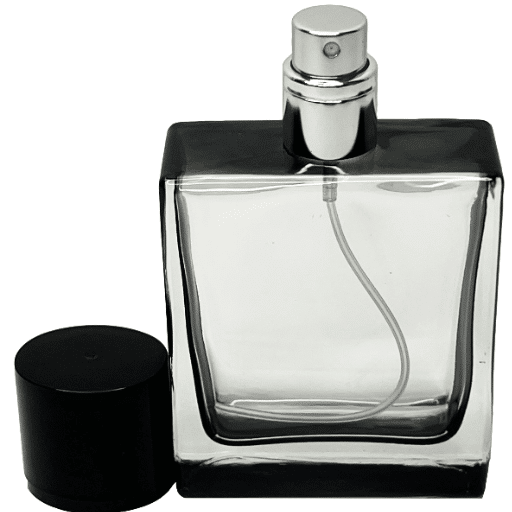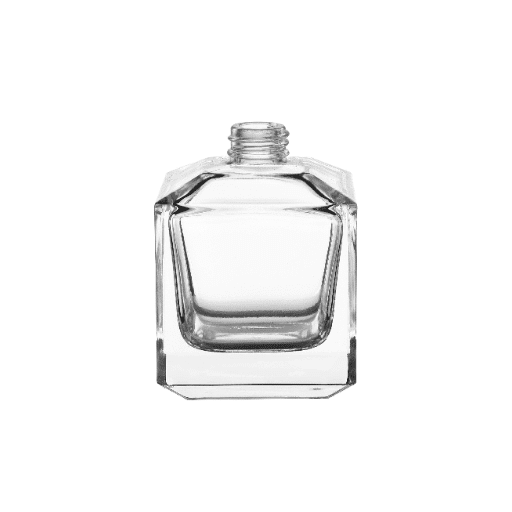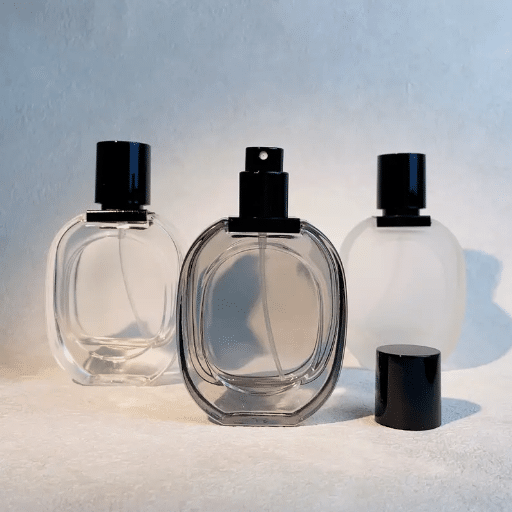Do you find it tedious to carry around bulky perfume bottles or attempt to refill your travel-sized containers without creating a spill? An adequately filled perfume travel bottle is very convenient for frequent travelers, busy professionals, or anyone who simply loves to have their favorite scents on standby. This guide will provide you with the best techniques to refill your travel bottles effectively and like a skilled professional. Through this article, we’ll address everything from selecting the appropriate tools to avoiding common mistakes. Perfume should always be kept as luxurious and fragrant while on the go as it is at home; therefore, tips and suggestions will be provided to avoid common blunders. Get ready to improve your experience while having your favorite perfume conveniently available at all times!
How do I transfer my perfume from one bottle to another?
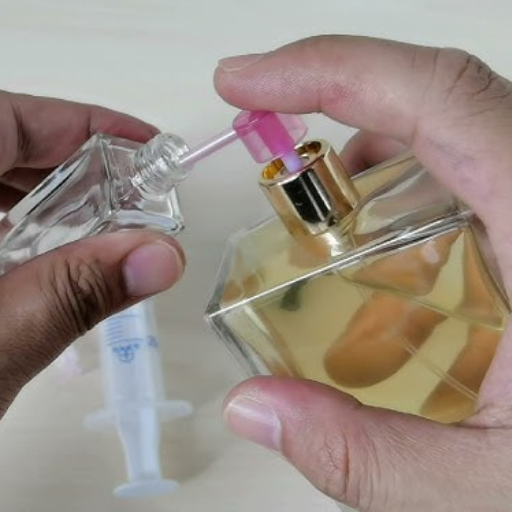
To move perfume from one bottle to another, it is best to follow these steps:
- Choose the Right Tools: Search the internet or your local beauty supply shop for small perfume funnels or transfer tools. These tools eliminate spills while offering the utmost accuracy.
- Clean and Prepare Both Bottles: Make sure the empty bottle is completely clean and dry so that the fragrance is not contaminated and can retain its quality.
- Pour or Spray the Perfume:
-
-
- If you plan on using a funnel, slowly pour the contents of the original bottle into the new one, being careful not to overfill.
- If you have a spray nozzle, you can aim the spray of the funnel or transfer tool designed to collect and spray.
-
- Securely Close Both Bottles: Both bottles should be sealed tightly to prevent evaporation or leakage.
If the steps above are followed, transferring perfume should be easy and safe, and very little quality will be lost.
Understanding different perfume bottle designs before the transfer
When transferring perfume, the bottles and mechanisms they comply with intermingle to create unique designs. Failing to understand them may result in wasted perfume due to spillage or inefficient handling damage.
- Classic Screw-Top Bottles: These are perhaps the most user-friendly for transferring perfume from one container to another. The bottle cap can be removed, and the fragrance liquid can be disposed of manually or through a funnel, which allows better flow management. Some simpler ones will enable the fragrance liquid to be poured out simply.
- Spray Nozzle Bottles: Unlike the previous types, these bottles allow direct application to places where perfume may be desired. Perfume cannot be sprayed and transferred without the aid of special equipment, including, but not limited to, transfer pipettes and special atomizing nozzles that allow the wearer to get around the denying nozzle without causing a leak.
- Rollerball Bottles: These are used for traveling and commuting, and travel-sized perfumes or containers with fewer fragrances have become readily available with these products. Rollerball caps that don’t allow leakage of liquid perfume contents are placed on the containers, making it necessary to have a specially designed small tool to open the cap if it needs to be placed on another vessel.
- Refillable Atomizers: These items are frequently used, and they make the task of manually unscrewing and attaching the pump much easier. In cases where perfume must be transferred across various bottles, unscrewing and placing the pump does not require massive carefulness with detachable tubes and bottom filling out tubes.
- Vintage or Decorative Bottles: Wonderful glass stoppers and unique designs are trademarks of vintage or decorative bottles. Because of their unique design, pouring from such bottles can be difficult and may require spillage prevention tools like droppers or siphoning equipment.
While understanding the steps in perfume transferring, it is essential to understand the bottle mechanism to avoid compromising fragrance and aim to achieve hassle-free tubing.
Tools needed to transfer perfume from one bottle to another
- Perfume Funnels
Small perfume funnels are a must to transfer liquid perfumes without spillage. These small tapered but well-fitting curved Instruments are smooth in every lip of most perfume bottles and thus help to avoid a mess while pouring. They are available in various materials, such as metal and plastic, and in multiple sizes, allowing them to be used on different types of bottles.
- Perfume Syringes
A perfume syringe is one of the best options to ensure precise transfers when dealing with hard-to-open or uniquely designed bottles. With syringes, liquid fragrances can be extracted without exposure to air, which helps preserve scents and quality during transfers.
- Transfer Pipettes
Pipettes are very light and affordable. They are also predominantly used for smaller quantities of perfume, making them versatile. They are best used to fill sample-sized bottles or roller ball applicators. The mechanism of the dropper allows for easy handling and control.
- Bottle Openers for Perfume
The most modern perfume bottles typically have a fine mist sprayer or complex cap. Customizable perfume openers can help safely remove these parts without breaking the bottle or spilling perfume.
- Cleaning Tools
Before transporting perfumes, a critical step is making sure the new bottle has no remnants of something that needs to be cleaned. Microfiber clothes, small bottle brushes, or alcohol swabs can be used to eliminate residue and prepare a bottle for a different fragrance.
Transfer tools Odyssey is a handy way to ensure you do not export the fragrances’ original essence and that the precious liquid is not wasted.
Step-by-step process to transfer your favorite perfume
- Gather the necessary tools
Gather all items needed for the transfer process. Included are a clean receiving bottle, a small funnel or dropper, alcohol wipes, gloves (optional), and the original perfume bottle. Having these tools helps ensure precision and cleanliness.
- Sanitize the receiving bottle.
Before starting the transfer, ensure that the receiving bottle is cleaned correctly. Scrub the inside and outside of the bottle with alcohol swabs to eliminate all residues and pollutants that may alter the scent of the perfume.
- Prepare the original bottle.
Check to make sure the bottle’s nozzle or spray is working. If it’s broken, clogged, or blocked, remove the perfume using a dropper, being careful not to leak or waste it.
- Use a small funnel or dropper.
Insert a small funnel in the neck of the receiving bottle and pour the perfume into it, or use a dropper to transfer the liquid. Pour the perfume with utmost gentility to avoid spillage and transfer each drop of liquid.
- Seal and secure the receiving bottle.
When transferring, tightly put the cap or spray nozzle on the receiving bottle. The tightness must be enough to prevent perfume from evaporating or leaking out so it can be preserved for future use.
- Label the new bottle.
For proper identification, write down the fragrance’s name on the label corresponding to the receiving bottle. This ensures that you’ll immediately know which perfume it is and minimizes the risk of confusion.
- Store in a cool, dark place
After transferring the perfume, store the bottle in a cool and dark location. This way, the fragrance will not be subjected to harmful heat and light, which may spoil its quality over time.
Following the steps detailed above ensures that you can transfer your perfume in the best way possible while maintaining the essence of the intended scent.
What’s the best way to open a perfume bottle without damaging it?

To open a perfume bottle without damaging it, follow these steps:
- Check the bottle design
Some bottles have screw caps, while others may have a stopper or a spray top. Identify what closure has been used before trying to open it.
- Use gentle pressure
If it is a stopper bottle, carefully twist and pull it up with some forward pressure. Do not strain too much. For screw caps, rotate slightly counterclockwise.
- Avoid using tools
Any attempts at prying the bottle open with sharp or metallic implements shall result in unwanted scratches or breaks to the bottle. Use hands only.
- Seek help if needed
If the bottle is too tightly closed, you can use a rubber grip over it or get help from someone without damaging it.
Following these instructions will ensure the bottle is not damaged and the fragrance stays inside.
Different types of perfume bottle closures and how to open them
Every kind of perfume bottle comes with an individual form of closure, which is functional and decorative. There are some common closures and some tips for removing them safely:
- Screw Caps
A large number of perfume bottles are sealed with a screw cap. To remove, firmly hold the cap and twist to the left (counterclockwise). If the cap is strict to remove, tying a rubber band around the cap may help. When placing the cap back on the bottle, take care not to overtighten it; this can prove detrimental to the threads over time.
- Press Caps
Press caps are ubiquitous, and spray bottles are designed to remain attached to the pump. Caps should never be replaced by force. If you need to get inside, gently wedge the cap off with a plastic spatula or something similar. Just don’t use excessive force, as they are pretty fragile.
- Stopper Closures
Stoppers tend to be made of glass or crystal and are common in older or more expensive bottles. Grip the stopper firmly and twist while pulling up to open. If stuck, warm water can be run over the neck to loosen it. Be gentle, as excessive force can cause the stem to snap from the body.
- Magnetic Closures
Magnetic closures offer an elegant and efficient design feature in modern luxury perfumes. They are pretty simple to open; just pull the cap straight off. Thanks to the magnet, the cap will detach easily and reattach precisely.
- Crimped Atomizer Caps
Crimped atomizer caps are permanently crimped, meaning they cannot be unscrewed. If accessing the liquid inside is necessary, decanting kits are handy tools for removing the liquid without disturbing the crimp.
Recognizing the type of closure used in your perfume bottle helps to manage it properly, preserving both the container’s aesthetics and the scent inside.
How to remove the spray nozzle without breaking the bottle
When taking the spray nozzle off a perfume bottle, it is essential to exercise caution not to cause any damage. Here’s the suggested method breakdown:
- Prepare Necessary Tools
Bring a small towel, rubber grip pliers, or a flat butter knife. These tools provide a superior hold while simultaneously preventing breaks or scratches.
- Secure the Bottle
Place the perfume bottle on a flat surface so it does not tumble or spill. Soft towels can protect the bottle while holding it during the process.
- Remove the Spray Cap
The outer spray cap is designed to be removed, so most people will probably encounter no problems removing it. It is recommended that most people use their hands and wiggle it upwards, as it is simple.
- Loosen the Nozzle Base
Loosen the neck of the bottle using soft-grip pliers. Lightly turn the base of the nozzle counter-clockwise. Do not use too much pressure, as it can break the neck of the bottle.
- Properly Extract Liquid
If the nozzle is not removable, use a decanting kit and a small funnel to pull the liquid out without force.
Following these steps, the perfume bottle will be securely closed and intact while you safely dip into its contents. Moreover, glass bottles are best handled carefully, as their delicate nature can easily lead to breakage or spilling of the fragrance, which is quite a treasure.
Troubleshooting when your perfume bottle isn’t opening easily
If the easy methodologies fail, you can take the following measures to aid in the safe opening of a stuck perfume bottle:
- Warm Water Method
Warm Water: For a few seconds, submerge the nozzle or cap area in warm water (not boiling). The heat can loosen any sticky glue or dried residue that may bind the cap. Remember not to let the water touch the perfume, which could lead to contamination.
- Rubber Gloves for Extra Grip
Extra Grip with Rubber Gloves In case the bottle isn’t slippery, one can use rubber gloves or a rubber jar opener, which can generate better friction to aid in fastening the cap’s removal.
- Lubricate the Cap Area
Cap Area Lubrication: Use a small and careful amount of food-grade oil along the base surrounding the cap. This gently eases the mechanism binding the cap. After unseating the cap, clean this area properly with a cloth.
- Utilize a Hairdryer
A hairdryer set to low heat can be aimed at the lid for 20-30 seconds. This helps to loosen the cap’s grasp as the material is heated and expanded. Be careful not to overheat the bottle or its contents.
Following one or more of the approaches above will most likely fix the problem. Always remember to exercise care regarding the bottle and its contents for the task’s duration. Sound care will help preserve the perfume’s quality while prolonging the user’s experience with the bottle.
Which tools work best to refill perfume bottles?

To refill perfume bottles, the following tools are suggested to improve efficiency:
- Perfume Funnels are specially designed small funnels for placing perfumes into bottles. Their design helps avoid spilling while pouring.
- Transfer Syringes: These narrow tips make them excellent for removing and placing perfumes in tiny-open containers.
- Refillable Atomizers: These specially designed portable containers allow for simple storage and use of perfumes. Most of them have adapters that allow for fast and easy filling.
- Pipettes: Small and lightweight disposable pipettes are perfect for precisely transferring a few drops of perfume and are valuable in the scientific world.
Adhering to these recommendations will significantly help minimize waste and maintain the quality of the perfumes whilst refilling them.
Using a funnel to refill your perfume bottle
Using a funnel to refill your perfume bottle is one of the most straightforward and effective ways of preventing spillage. Begin with a small funnel, preferably made of stainless steel or plastic, as they are easy to clean -. Make sure the funnel is compatible with the opening of your perfume bottle. Before commencing work, wash the funnel with mild soap to avoid ruining your perfume.
While refilling, it is recommended to securely place the funnel in the mouth of the bottle and drain the perfume slowly. If you are dealing with larger quantities, tilting the bottle slightly can aid in controlling the flow rate. Research indicates that funnels as utensils can reduce waste by 30% compared to other methods. This makes them ideal for accurate and careful transfers. Don’t forget to rinse your funnel after use and store it properly. That way, you will ensure you have it ready for next time while maintaining hygiene.
How to use a syringe for precise perfume transfer
Perfume can be accurately and precisely spilled through a syringe, which is the perfect utensil choice for the job. Start by checking the amount of perfume you need to transfer. For the best results, take a 10ml syringe, as they are considered ideal for precise volume marking. Plunge the tip of the needle into the perfume bottle and draw out the liquid to the desired mark. Push the contents into the chosen vessel gently and with reasonable and steady force to the syringe plunger. Depending on industry standards, this method results in an enormous reduction in perfume waste, thus making it a cost-efficient and eco-friendly alternative. After use, do not forget to detailed clean the syringe, this protects it from contamination whilst retaining efficacy for future transfers.
Alternative tools when you don’t have specialized equipment
Common household gadgets can come in handy without equipment, such as syringes and precision droppers. A clean straw or a pipette made from plastic can transfer small amounts of liquid. As a result, the straw should be dipped into the liquid, and the top sealed with a finger. Then, the straw may be moved to the target container, and the liquid will transfer. A spoon with a narrow tip is also helpful while measuring for larger doses. Although these approaches are not as exact as some more specialized instruments, they offer superb usability when precision is unnecessary. These tools can be used in non-commercial settings or without more advanced technology.
How can I refill a travel perfume bottle without spilling?
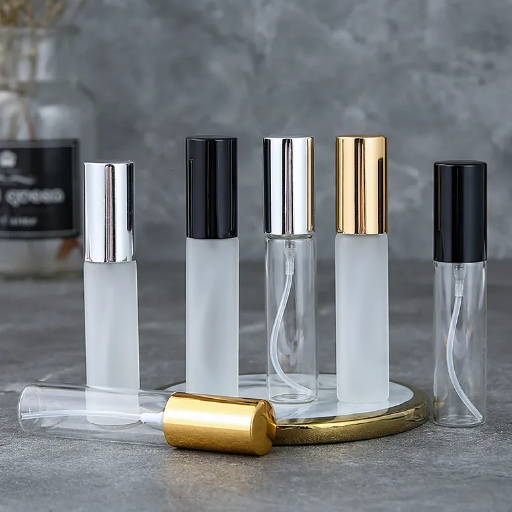
Follow these steps to refill a travel perfume bottle without spilling:
- Use a Funnel – A small funnel will prove quite handy in these situations as it can guide the liquid directly into the container without spilling.
- Transfer with a Syringe—A syringe is a perfect tool for drawing up the perfume and precisely transferring it into the travel bottle.
- Bottle-to-Bottle Transfer: Use a spray bottle to Remove the cap or nozzle from both bottles. With the original perfume bottle upright, press the nozzle head firmly against the opening of the travel bottle. While keeping the travel bottle pressed, spray perfume directly into it. Ensure a tight fit to avoid leakage.
Take your time and set everything up on a flat surface so you do not make a mess.
Preparing your workspace before refilling travel bottles
To refill travel bottles smoothly and efficiently, start by sanitizing the workspace. Put a clean, absorbable paper towel on the tabletop and cut out a rectangle-shaped cloth. This strategy aims to allow you to pour out perfumes conveniently without worrying about spilling on the table.
Ensure all equipment, including funnels and transfer pipettes, is within easy reach and clean and dry. Cleaning your workspace first is also recommended, as vapor from the products used, such as cosmetics or perfumes, may have a powerful smell, and ventilating the area will aid in odor reduction.
For ease of use, try sorting products by function or type. To further aid with organization, label travel bottles with appropriate photo descriptors. Keeping a clean refill environment and avoiding chaos during the refill while ensuring product quality is essential and can be achieved by taking previously listed steps and precautions.
Techniques to pour the perfume into smaller bottles
Lack of proper technique can quickly lead to spills when transferring perfume to smaller bottles, a problem that can be solved using a small funnel. Focusing on how the funnel is placed onto the smaller bottle and ensuring it is fastened securely will help prevent perfume overflow when being poured. Concentrate on cleaning the funnel to ensure it will not contaminate the perfume.
A transfer syringe or a pipette can also be used for precision. They provide greater control while transferring small amounts of thick liquids like perfume. Liquid can be released drop by drop into the smaller bottle, significantly reducing waste and ensuring an even fill.
For spray bottles, try the straw method. Remove the nozzle and place a thin straw or tube into the bottle. Seal the gap with plastic wrap or a finger, then tilt the enormous container while gently guiding the smaller one, thus allowing a controlled flow of liquid from the straw. This method limits the disassembly of the container and is simple for the user.
These methods make the transfer process efficient and clean. This will enable the perfumes to be easily portable without compromising quality.
Preventing fragrance loss during the transfer process
To prevent the loss of fragrance during the transfer process, the tools and methods must preserve the fragrance entirely. First, all containers and equipment should be clean and dry to prevent contamination or dilution of the perfume. During the movement of fragrance, the use of airtight funnels or precision syringes aids in the reduction of airflow. Too much exposure to oxygen is detrimental to the scent; therefore, a calm and low-humidity environment is recommended for the transfer process to curb heat expectations and alleviate the impact of the humid composition. The added glass airtight containers can also help control the reaction speed of the fragrance as glass is less reactive than plastic containers, safeguarding the quality and desired characteristics of fragrances. Proven steps that aid in achieving the desired composition of fragrances.
What are common mistakes to avoid when refilling perfume bottles?
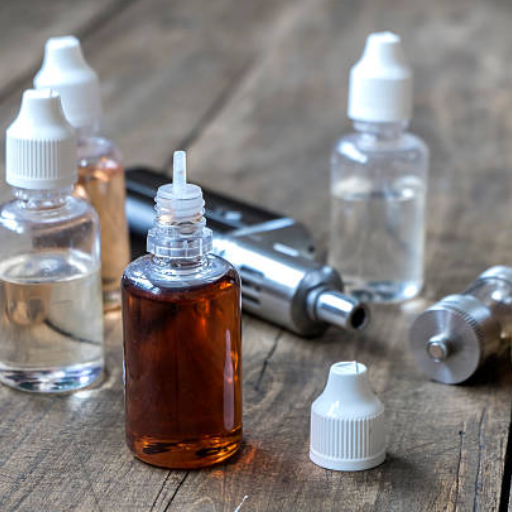
- Using non-sterile tools: Ensure the refilling tools are clean and sterilized, as they can introduce contaminants that alter the perfume quality.
- Exposing perfume to air for too long: The fragrance should not be exposed to air for too long as it can cause oxidation, which will spoil the scent.
- Choosing improper containers: Don’t use plastic bottles that do not seal properly or are poorly constructed, as they can react with the perfume and not preserve its scent.
- Refilling in unsuitable environments: High humidity, heat, and direct sunlight are not suitable areas to refill perfumes as these conditions will deteriorate the fragrance.
- Mixing different perfumes accidentally: Clean the mixing tools and bottle properly so no other smells can interfere to avoid cross-contamination.
Proper cleaning of empty perfume bottles before refilling
To maintain the quality and lifetime of your fragrance, cleaning empty perfume bottles to perfection before refilling them is crucial. This starts with removing the bottle from the nozzle, spray pump, and cap component. Followed by rinsing the bottle with warm distilled water. If some fragrance residues are left, it is best to make a watercolor solution and rubbing alcohol equally. This helps to break down lingering oily and lingering residue scents. Put the solution in the bottle, swirl for several minutes, and rinse thoroughly. The bottle must be dried in cool and dry places until air dried utterly to avoid moisture affecting the new fragrance. Do not use abrasives, which can alter scents and damage the bottle. Cleaning is vital to maintain the perfume’s composition, pristine surrounding environment, and scent balance.
Avoiding contamination of your perfume during transfer
Maintaining the purity of your perfume during the transfer process is essential for long-term quality and longevity. Start with clean, sterilized tools like pipettes and pumps, ensuring the perfume is handled with the utmost care. This prevents foreign matter from entering the container. Ensure your workplace is clean and free of dust particles to prevent contamination. Hands and other surfaces can introduce fragrance, compromising unclean elements, so avoiding direct contact is essential. Appending gloves helps keep skin oils away from the perfume and diminishes their interaction. The transfer container must be sealed tightly to keep air exposure to a minimum, as this will degrade the scent over time. Following these practices will ensure your perfume stays true to its formulation.
How to store refilled perfume bottles to maintain fragrance quality
The long-lasting duration and quality of the perfume will be retained as long as refilled perfume bottles are correctly stored. This ensures that the bottles are kept where the temperature does not exceed room temperature and direct sunlight is not received, such as in enclosed drawers and rooms. These places are devoid. Stores are not suitable as they contain high humidity levels. A humidity-free bedroom drawer is perfect. The light from the first instruction can be avoided by using opaque packaging. The potency will be maintained through these instructions, and the perfume will continue to smell delightful even after extensive periods.
Are all perfume bottles refillable, or just specific types?
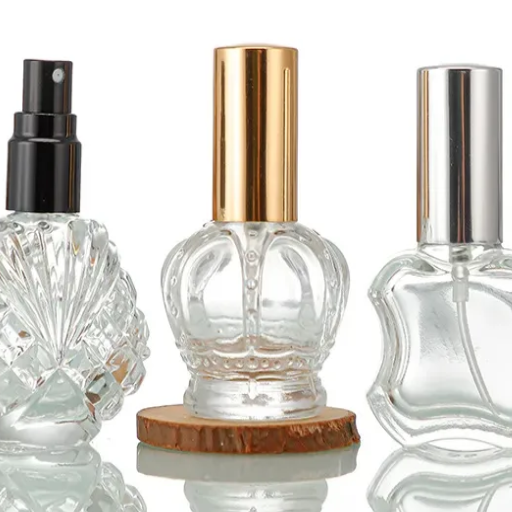
Not every perfume bottle can be refilled. Only some types, typically from specific brands, offer refilling options. These bottles usually possess caps or sprays that can be removed for easy refilling. Many luxury fragrance brands now offer refillable bottles for their sustainability campaigns. For non-refillable bottles, it is not recommended to transfer perfumes as it may degrade the fragrance quality. As a reminder, always check the packaging or ask the brand to ensure a bottle’s status as refillable.
Identifying which type of perfume bottles are designed for refilling
When determining if a perfume bottle is refillable, specific design and packaging elements can assist you in identifying refillable options. Below is a list of common types of refillable perfume bottles and their characteristics:
- Bottles with Removable Caps
-
-
- These bottles generally possess caps that are either easily screwable or twistable. This feature allows users to obtain access to the internal chamber for refilling.
- Common to both luxury and niche fragrance brands.
- Refillable bottles with removable caps are commonly accompanied by instructions or guidance from the manufacturer.
-
- Spray Bottles with a Detachable Nozzle
-
-
- Some spray bottles have nozzles or spray heads which can be detached to provide access for refilling.
- This design is especially popular in customizable fragrance brands that focus on eco-friendliness.
- Companies sometimes make refillable kits tailored to fit these specific bottles perfectly.
-
- Luxury Bottles with Refill Pods
-
-
- Luxury perfume brands have also started to include separate refill pods or cartridges for their larger perfume systems.
- These pods can be attached to the main bottle, significantly reducing waste and filling them accurately.
- Mugler, Dior, and Louis Vuitton are some brands that use these refill systems.
-
- Rollerball or Travel-Sized Bottles with Screw Caps
-
-
- Spray bottles for fragrances intended for travel often come in rollerball size, miniature skippable spray, and the ability to unscrew the caps.
- Refilling from larger bottles is possible with the help of sucking tools or funnels.
- Easy to carry around and highly convenient.
-
- Atomizers with Built-In Refillable Mechanisms
-
-
- Refillable atomizers are small, compact refillable perfume bottles.
- Many have a fill-from-the-bottom feature, where users can actively pump fragrance from the original bottle into the atomizer’s nozzle.
-
Additional Tips for Identifying Refillable Bottles
- Look for refillable markings: “refillable eco-friendly” on the package.
- Check the website; user guides often have these features and sustain branding.
- While refillable Spanish fragrances usually cost extra, they guarantee savings from long-term delta.
Ensure that utmost care is taken during refilling to prevent tampering with the original scent and contamination.
Working with bottles that aren’t technically refillable
If I have a bottle that ‘technically’ is not refillable, I try to find methods to reuse or repurpose the bottle while being innovative and gentle. First, I ensure the bottle has been washed and dried to prevent contamination. After that, I can attempt to pour a similar fragrance or liquid into the bottle using a funnel, but only to a certain level. While I do not have an utterly refillable design, this method does allow me to reduce waste to an extent, thus extending the bottle’s lifespan.
Best refillable perfume bottle options for frequent travelers
For travel purposes, I prefer refillable perfume bottles that are easy to use, portable, and, most importantly, durable. A great example is the Travalo Atomizer, which is compact and has a simple pump system. This allows for easy fragrance transfer directly from the original bottle without spills. The strong yet lightweight construction makes it perfect for travelers who enjoy frequent trips.
Another great option is the Nomad Perfume Atomizer, which is made of aluminum and can withstand the test of time. Carrying preferred perfumes becomes even more convenient with a leak-proof outline and a TSA-approved size.
The SENZER Refillable Atomizer Perfume will be ideal if you want something more stylish. It has a sleek and classy design and serves its purpose well. Moreover, it has a visible window to monitor the amount of liquid left, which helps during long trips.
These atomizers help preserve the environment by reducing packaging waste. They also allow you to keep your favorite perfume accessible while on the go.
Reference Sources
- “A Practical Approach to Transferring Liquids Between Containers Safely and Efficiently” (2020) – This study explores various methods for transferring liquids, including perfume, between containers. The researchers analyzed manual and pump-based tools to assess their efficiency, precision, and ease of use. Key findings indicate that air pressure-based pump systems are the most effective for preventing spillage and preserving liquid integrity during transfer.
- “Understanding the Mechanism of Liquid Dispersion in Small-Scale Containers” (2021) – Published in the Journal of Fluid Mechanics, this paper examines the fluid dynamics involved in transferring small quantities of liquid, such as perfume, from one container to another. The study emphasizes the role of nozzle design and container compatibility, recommending tapered or precision nozzles for optimal accuracy and minimal waste.
- “Sustainable Packaging and Reusable Dispensers in the Fragrance Industry” (2022) – This article discusses the environmental impact of single-use perfume packaging and highlights innovative solutions like refillable perfume atomizers. The research includes case studies on consumer adoption of refillable designs, emphasizing their practicality and environmentally friendly appeal.
- “Perfume Refill Techniques in Travel Containers” (2023) – This investigation focuses on user-friendly techniques for refilling travel-sized perfume containers. Through extensive testing, the study determines that syringes and portable filling pumps are the most effective tools for accurate and quick transfers. Recommendations also include pre-marked containers to monitor liquid levels effectively.
These papers provide valuable insight into the most practical, efficient, and sustainable methods for transferring perfume between bottles, facilitating improved user experience and environmental responsibility.
Frequently Asked Questions (FAQs)
Q: Could you provide a step-by-step guide on how to refill a perfume travel bottle?
A: Absolutely! Here’s a comprehensive step-by-step guide for refilling your perfume travel bottle: 1) Start by gathering your supplies: the empty travel bottle, your original perfume, and a small funnel (if available). 2) Ensure both bottles are clean and dry. 3) Carefully open your perfume bottle by removing the spray nozzle – most can be pulled straight up or gently twisted off. 4) Position the funnel at the top of the travel bottle (if you don’t have a funnel, use a clean pipette or steady hands). 5) Slowly pour the perfume into the bottle, careful not to spill. 6) replace the spray mechanism on both bottles once filled to your desired level. 7) Wipe any excess perfume from the outside of the bottle. 8) Test the spray mechanism to ensure it works properly. This method helps preserve the quality of your perfume during transfer.
Q: How do I open my perfume bottle to refill it without damaging the spray mechanism?
A: Opening your perfume bottle properly is crucial when refilling. Most perfume bottles have spray mechanisms that can be removed by firmly gripping the spray head and pulling it straight up with a gentle wiggling motion. Some might require a slight twist while pulling. Never force it open, as this could break the sprayer. If it’s stubborn, try wrapping a rubber band around the neck for better grip. Once removed, you’ll see the small tube that draws the perfume up from the bottom of the bottle. Handle this carefully when refilling, and when replacing the spray mechanism, push it down firmly but gently until it clicks into place. If getting inside your perfume bottle seems too tricky, consider purchasing refillable travel atomizers designed for easier transfers.
Q: What’s the best way to refill a perfume bottle without spilling or wasting perfume?
A: To refill a perfume bottle efficiently without waste, use a small funnel (plastic or metal funnels designed for cosmetics work best). If you don’t have a proper funnel, make one by cutting the top off a plastic water bottle or using a piece of stiff paper rolled into a cone. Alternatively, use a small syringe or pipette to transfer the perfume precisely. Work over a clean surface or place a paper towel underneath to catch any spills. Pour slowly and in small amounts, allowing the perfume to flow gradually into the travel bottle. If possible, refill in a well-ventilated area away from open flames, as perfume contains alcohol. This careful approach ensures you don’t waste any of your precious perfume during transfer.
Q: Can I refill a perfume travel bottle with different fragrances over time?
A: You can refill a perfume bottle with different fragrances, but proper cleaning between uses is essential to prevent mixing scents. To clean the bottle: 1) Empty any remaining perfume. 2) Rinse with hot water. 3) Fill halfway with rubbing alcohol (isopropyl alcohol), close and shake vigorously, then discard. 4) Repeat the alcohol rinse if necessary. 5) Allow the bottle to dry completely for 24-48 hours with the spray mechanism removed. Be aware that some residual scent might remain, especially if your previous perfume was powerful or the bottle has rubber components that absorbed the fragrance. For this reason, some perfume enthusiasts prefer to dedicate specific travel bottles to particular scents to maintain the purity of each fragrance.
Q: How do I prevent damaging the quality of my perfume when transferring it to a travel bottle?
A: To preserve the quality of your perfume during transfer, follow these precautions: 1) Avoid excessive exposure to air, as oxygen can deteriorate fragrance compounds. Work quickly when your original bottle is open. 2) Keep away from direct sunlight and heat during the transfer process. 3) Use clean equipment – any contaminants can alter the scent. 4) Don’t shake the perfume vigorously, which can introduce air bubbles and potentially alter the fragrance profile. 5) If using a funnel, ensure it’s scorched and clean. 6) Store your perfume properly after refilling – in a cool, dark place away from temperature fluctuations. 7) Consider using dark glass or aluminum travel bottles that protect against light exposure, which can degrade perfume over time.
Q: Is using a glass or plastic bottle to refill perfume better?
A: Glass bottles are generally superior for storing perfume compared to plastic for several reasons: 1) Glass is non-reactive and won’t interact with the perfume ingredients, whereas some plastics may react with the alcohol and oils in perfumes. 2) Glass provides better protection against temperature fluctuations. 3) Fragrance oils are less likely to permeate glass, maintaining the scent’s integrity. 4) Dark or amber glass bottles offer UV protection, preventing light degradation. However, plastic does have advantages for travel: it’s lighter, less breakable, and often permitted in places where glass might be restricted. If you must use plastic, opt for high-quality, perfume-safe plastic marked with PETE or PET recycling codes, which are more resistant to chemical interactions. For short trips, plastic is practical, but for more extended storage, glass helps maintain your perfume’s original scent profile.
Q: What tools do I need to refill a perfume bottle using different types of perfume packaging?
A: The tools you need vary depending on the original perfume packaging: 1) For standard spray bottles: A small funnel, optional pipette or syringe, and possibly pliers with rubber-coated tips to carefully remove stubborn spray mechanisms. 2) For rollerball bottles: A pipette or syringe is ideal as these bottles typically have narrow openings. 3) A steady hand and small funnel should suffice for splash bottles without sprayers. 4) For samples or decants in vials: A micropipette works best for precision. Additional helpful tools include cotton swabs for cleanup, rubber gloves to prevent fingerprints, small towels for spills, tweezers for removing delicate parts, and small containers for temporary perfume holding during the transfer process. Always ensure all tools are clean and dry before they come in contact with your perfume to maintain fragrance integrity.
Q: How can I tell if my perfume bottle is refillable?
A: To determine if your perfume bottle is refillable, examine these features: 1) Check if the spray mechanism can be removed – gently try to pull up or unscrew the sprayer. If it comes off without excessive force, it’s likely refillable. 2) Look for indications on the perfume packaging that mentions “refillable” or “rechargeable.” 3) Research the specific brand and bottle design online, as some luxury brands like Thierry Mugler and Kilian intentionally create refillable systems. 4) Bottles with screw-top spray mechanisms are generally easier to refill than crimped ones (permanently attached). 5) Some bottles have a visible seam where the top connects, suggesting it can be separated. Remember that even if a bottle wasn’t designed to be refillable, many can still be carefully opened for refilling purposes. However, this may void any warranty and should be done cautiously to avoid damaging the sprayer mechanism.
Q: How do I fill the travel bottle appropriately to ensure my perfume sprays correctly?
A: To ensure your travel bottle sprays correctly after refilling: 1) Don’t overfill – leave about 1/4 inch of space at the top to allow the spray mechanism to function correctly. 2) After filling, insert the spray tube carefully, ensuring it reaches the bottom of the travel bottle to draw the perfume properly. 3) Secure the spray top firmly but gently. 4) Before regular use, prime the pump by spraying several times until a consistent mist appears. 5) If the spray seems blocked, remove the nozzle and rinse it with warm water, then dry completely before reattaching. 6) For bottles with dip tubes, ensure the tube isn’t bent or crimped during reassembly. 7) Check that the bottle is completely sealed to prevent evaporation. If your spray mechanism isn’t working even after these steps, the pump may be damaged, and you might need to transfer your perfume to another container.
Q: How can I refill a perfume bottle with a crimped collar that doesn’t easily open?
A: Refilling a perfume bottle with a crimped collar (where the spray mechanism is permanently attached) requires an alternative approach: 1) Instead of removing the top, use the “decanting method” – spray your original perfume directly into the open travel bottle. This is slower but preserves the integrity of both bottles. 2) Alternatively, purchase a fragrance pump that extracts perfume through the spray tube – these specialized tools pull fragrance out without opening the bottle. 3) For a DIY approach, carefully insert a clean syringe needle through the gap between the spray mechanism and bottle collar to extract the perfume. 4) Some perfume enthusiasts carefully use needle-nose pliers to pry up crimped collars gently, but this risks damage and is not recommended for valuable bottles. 5) Consider investing in purpose-made travel atomizers that attach directly to your perfume’s spray mechanism for easy transfer without opening either bottle. These “travel perfume pumps” are available from beauty retailers.

